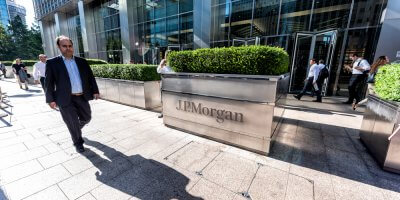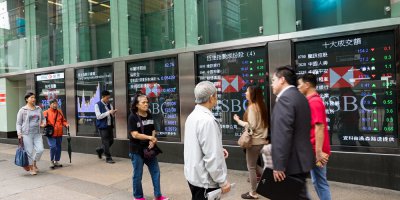
MAS announces successful cross-border and cross-currency payments using central bank digital currencies. Source: Shutterstock
Singapore’s MAS trials blockchain for cross-border payments
BLOCKCHAINS seem to be moving out of the hype cycle and making major headway in commercial entities.
Like many think tanks predicted, the financial services industry is leading the way with the technology, although pharmaceuticals, supermarket chains, and logistics companies aren’t far behind.
Most recently, the Monetary Authority of Singapore (MAS) revealed that it partnered with the Bank of Canada to trial the use of blockchain technology on cross-border and cross-currency payments using central bank digital currencies.
The experiment, MAS reported, was successful. This is the first such trial between two central banks, and has great potential to increase efficiencies and reduce risks for cross-border payments.
The project is quite exciting as banks and financial institutions across the world have been keen on using the technology to improve trade finance but failed to scale up pilot projects repeatedly.
In the trade finance space, the cross-border payments use case for blockchain has the most potential because traditional processes are slow and costly — problems the new technology is designed to remedy easily.
Cross-border payments rely on a correspondent banking network that is subject to counterparty risk, inefficient liquidity management, and cumbersome reconciliation. All of which serve as obstacles in the traditional process.
The collaboration between the Bank of Canada and MAS uses central bank digital currencies to make the cross-border payment process cheaper, faster, and safer.
MAS and Bank of Canada’s success shines a light on what success could look like, and the future state of the industry. The trial is also expected to encourage the acceleration of blockchain technology in Southeast Asia in the near future.
It’s interesting to note that the two central banks operated on different experimental domestic payment networks, built on different blockchain platforms.
Bank of Canada’s network is called Project Jasper, while Project Ubin is the name of the network run by MAS.
With help from JP Morgan and Accenture, the two networks were joined using a technique called Hashed Time Locked Contracts (HTLC).
Doing so allowed payment versus payment (PvP) settlements without the need for a trusted third party to act as an intermediary.
Since cross-border payments involve a set of actions that are not tightly synchronised, there’s a possibility that one action will succeed and another fail. This could leave the payment inconsistent, creating a risk that one party will gain at another’s expense.
In the traditional system, a trusted third party acts as an escrow to the transacting party to ensure commitment of the whole transaction or cancellation of the whole.
With blockchains in play, the HTLC is what is used to realize this all-or-nothing guarantee. HTLC synchronizes all the actions making up a payment, so that either they all happen, or none happen.
“Project Jasper and Project Ubin have built on previous innovations in the payments area to demonstrate that cross-border payment and settlement can be made simpler and more efficient,” said MAS Chief Fintech Officer Sopnendu Mohanty.
“Together, these projects have addressed many technical questions and brought the technology to a higher level of maturity.
“The next wave of central bank blockchain projects can make further progress by bringing technology exploration together with policy questions about the future of cross-border payments.”
Given the success of the project, Bank of Canada and MAS seek to encourage the global financial community to build on their findings and work together to make international payments better, faster and cheaper.
“The successful outcome of the Jasper-Ubin project is a big milestone for the modernisation of cross-border, cross-currency transactions,” said Accenture MD and Global Blockchain Lead David Treat.
“This collaboration between central banks, industry participants and technology experts has shown that material transformation is possible and that the challenges can be overcome.”
While the trial doesn’t mean cross-border payments in Singapore or anywhere else in the world will immediately become better, faster, or cheaper, it does indicate a big change for businesses and individuals in the near future.
READ MORE
- Ethical AI: The renewed importance of safeguarding data and customer privacy in Generative AI applications
- How Japan balances AI-driven opportunities with cybersecurity needs
- Deploying SASE: Benchmarking your approach
- Insurance everywhere all at once: the digital transformation of the APAC insurance industry
- Google parent Alphabet eyes HubSpot: A potential acquisition shaping the future of CRM






